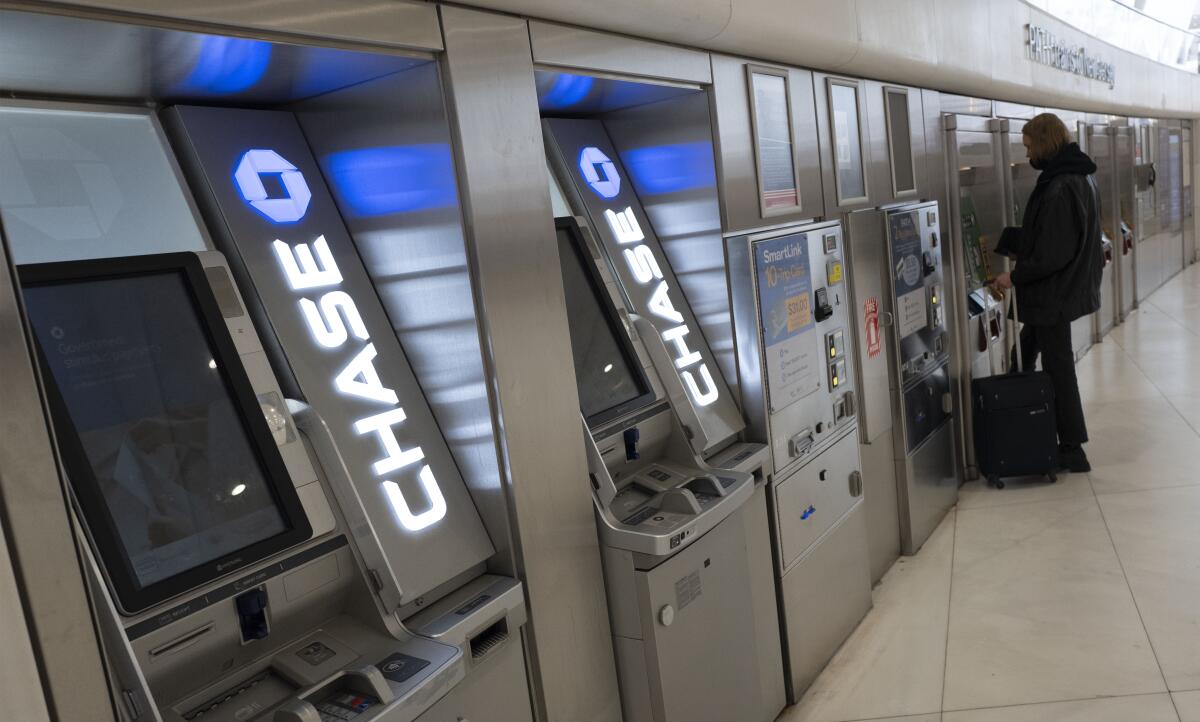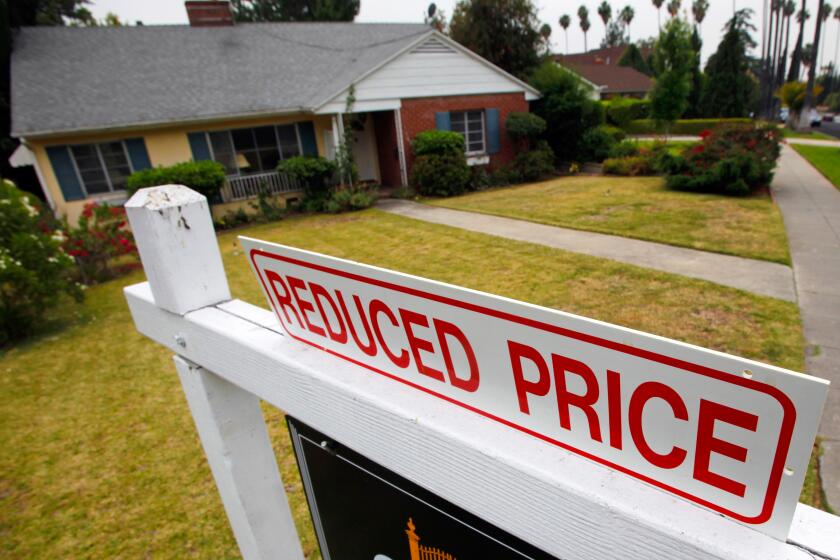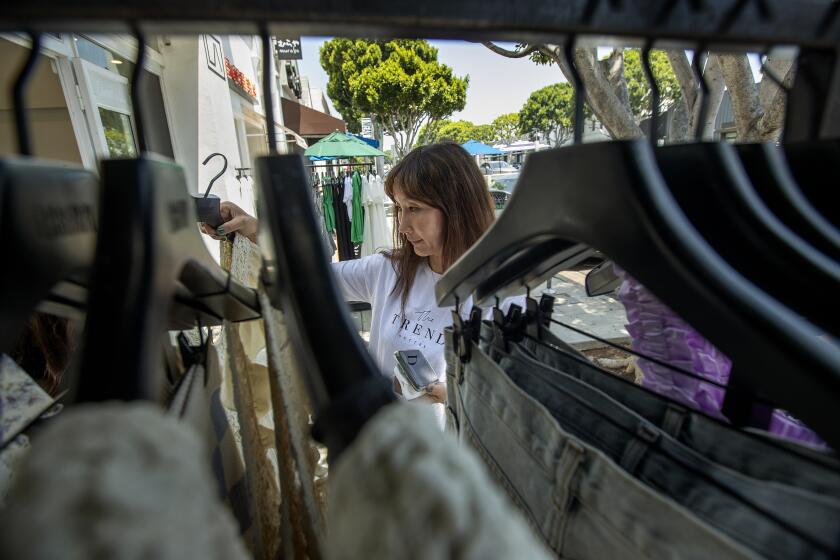How will the Fed interest rate hike affect you?

Consumers are already paying more for gas, groceries and everyday items, but they should expect to fork over more in other parts of their lives after Wednesday’s interest rate increase.
The Federal Reserve’s move to rein in inflation will affect home mortgages, credit card borrowing, car loans, labor market stability and overall consumption. The goal is to reduce the amount of money in the economy.
“Too much money makes the money less valuable,” said Larry Harris, professor of finance at the USC Marshall School of Business and former chief economist at the U.S. Securities and Exchange Commission. “To control inflation, the Fed has to stop creating so much money. And when it stops creating money, interest rates tend to rise.”
Though the Fed doesn’t set the interest rates consumers pay on their credit cards, mortgages or personal loans, it controls the federal funds rate, which is the basic rate at which banks borrow and lend among one another. When that moves, so do consumer interest rates.
Banks are required to have a certain amount of money in reserve, and when they make loans to people who want to buy homes or cars or to start businesses, they might have to borrow from other banks to make sure they maintain that reserve amount.
The U.S. central bank raised rates amid a widespread sense that inflation is out of control — and, some say, beyond the Fed’s control.
At this time last year, the interest rate for borrowing from the general banking system was 0%, said Leo Feler, a senior economist at the UCLA Anderson Forecast. At that rate, banks were more than willing to make loans to consumers because there were basically no costs involved in covering their reserves. But now, with a higher interest rate range of 1.5% to 1.75%, banks will want to ensure they have enough in reserve and act more cautiously, making fewer home, auto or other loans as a result, he said.
The financial markets were already pricing in the expectation of higher interest rates — for example, by one measure, mortgage rates hit 6% in the days before the Fed announcement Wednesday. The question is: How high will they go?
“The Fed has telegraphed that it’s going to keep increasing rates until inflation comes down, no matter what it takes,” Feler said.
Here’s what consumers can expect to see after Wednesday’s rate increase.
Mortgage rates
The Fed’s benchmark interest rate hike will affect the minority of households that take out adjustable-rate mortgages or home equity lines of credit, probably increasing their cost to borrow.
Affected homeowners who have the option of converting to fixed-rate loans may want to consider doing so, Harris of USC said.
They should also get out their loan paperwork and review a few specific details to understand how the rate increase will affect their particular loan, said Greg McBride, chief financial analyst at consumer financial services firm Bankrate.com. Those include: when the loan next adjusts, what index the loan is tied to and what margin is added to that index to determine their rate.
People with home equity lines of credit can expect to see their rate increase by 0.75 percentage point within the next 60 days, he said. But consumers should remember that Wednesday’s Fed decision is not a one-time deal.
“This is the third in a series of interest rate hikes by the Fed this year and likely into next year,” McBride said. “The cumulative impact is what you have to keep in mind.”
The effect on fixed-rate mortgages — including the popular 30-year fixed loan — is less certain.
Mortgage experts said increases in the federal funds rate don’t directly affect these mortgages, but they can indirectly push fixed mortgage rates higher or lower if Fed actions influence investor thinking about how entrenched inflation is.
That’s because if inflation is expected to be high in the future, investors will demand a higher yield, or interest rate, on mortgages they buy.
Mortgage rates have already surged this year, rising from the 3% range in January to above 5% as of last week. By some measures, they have topped 6%.
The sharp rise in borrowing costs has pushed some home buyers into new price brackets and priced others out altogether, causing home sales to fall in the process.
In a significant shift in the market, fewer homes are going into escrow, inventory is rising and sellers are increasingly cutting their asking prices.
It’s possible that the larger-than-expected increase in the federal funds rate could convince investors that inflation will be tamed sooner and thus send fixed-rate mortgages down, said mortgage industry consultant David Stevens, the former head of the Mortgage Bankers Assn.
Alternatively, larger increases in the Fed rate could spook investors and send mortgage rates higher, said Keith Gumbinger, vice president of research firm HSH.com.
Credit card debt
Credit card interest rates aren’t set by the Fed, but they do move with the federal funds rate. When this rate rises, credit card interest rates rise too. McBride of Bankrate.com said credit card holders should expect to see their rates increase by 0.75 percentage point within the next 60 days or so.
“With rising interest rates, people who have borrowed money at variable rates, like people who borrowed on their credit cards, should make an extra effort to reduce their balances as quick as they can,” Harris said. “Otherwise, they’ll pay higher rates in the future, which will hurt them.”
Labor market mobility
The Fed’s higher-than-expected rate increase means hiring will probably slow down and there may be more layoffs on the horizon, Feler of UCLA said. He forecasts that the national unemployment rate will rise to 4.5% by the end of the year, up from the current 3.6%. As unemployment goes up, wage growth goes down, which will damp consumer spending power.
In a significant shift in the market, fewer homes are going into escrow, inventory is rising and sellers are increasingly cutting their asking prices.
People will be worried about keeping their jobs and could be less likely to ask for higher wages. Those in low-wage jobs or jobs they don’t like will be more likely to stay in their current positions for fear of being unemployed.
“The trade-off right now is that the Federal Reserve is willing to sacrifice some employment in order to make sure that inflation comes down because in the long term, if we continue to have such high rates of inflation, it really harms consumers,” Feler said.
This comes at a moment when hiring has been booming. In May, the U.S. added almost 400,000 jobs, with unemployment remaining low. Businesses overall have been eager to hire to keep up with consumer demand for goods, though some companies, especially those that thrived during the pandemic, such as Peloton and Netflix, have seen cuts.
Less demand for goods
High inflation has reduced shoppers’ purchasing power as price increases ate up any pandemic-related wage boosts. But consumers don’t seem to have significantly cut back on spending just yet. That means it might take longer for the Fed’s action to translate into a slowdown in consumer demand.
By tinkering with the interest rate, the Fed is trying to influence demand in the economy. Higher interest rates cause borrowing costs to go up and lead consumers and businesses to spend less.
Residents of the Los Angeles area are changing how they eat, shop and do business to cope with some of the nation’s highest gas and housing prices.
Consumers stop buying goods because they’re worried about losing their jobs. Discretionary expenses such as dining out or streaming services are cut. Sales of furniture and appliances slow because would-be home buyers are priced out of the market. Big-ticket-item purchases are nixed.
That‘s good news for your savings. McBride of Bankrate.com suggested seeking out smaller community banks, credit unions and online banks to get the best returns on savings accounts and certificates of deposit.
“It induces more people to save up because you want to reward people who are saving up or becoming savers,” Feler said. “What you’re trying to get people to do is not go out and consume as much as they were consuming before.”
More to Read
Inside the business of entertainment
The Wide Shot brings you news, analysis and insights on everything from streaming wars to production — and what it all means for the future.
You may occasionally receive promotional content from the Los Angeles Times.
















